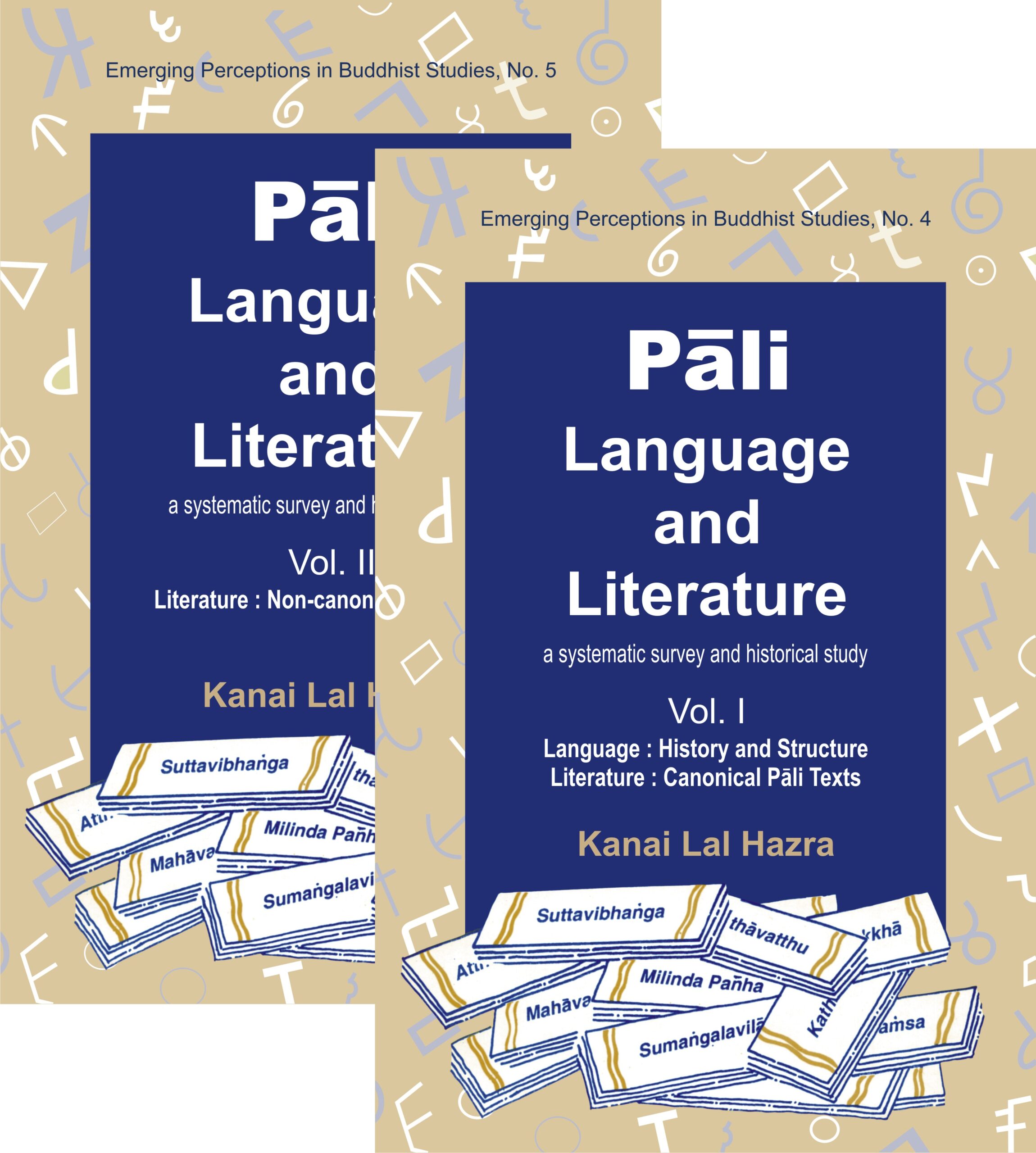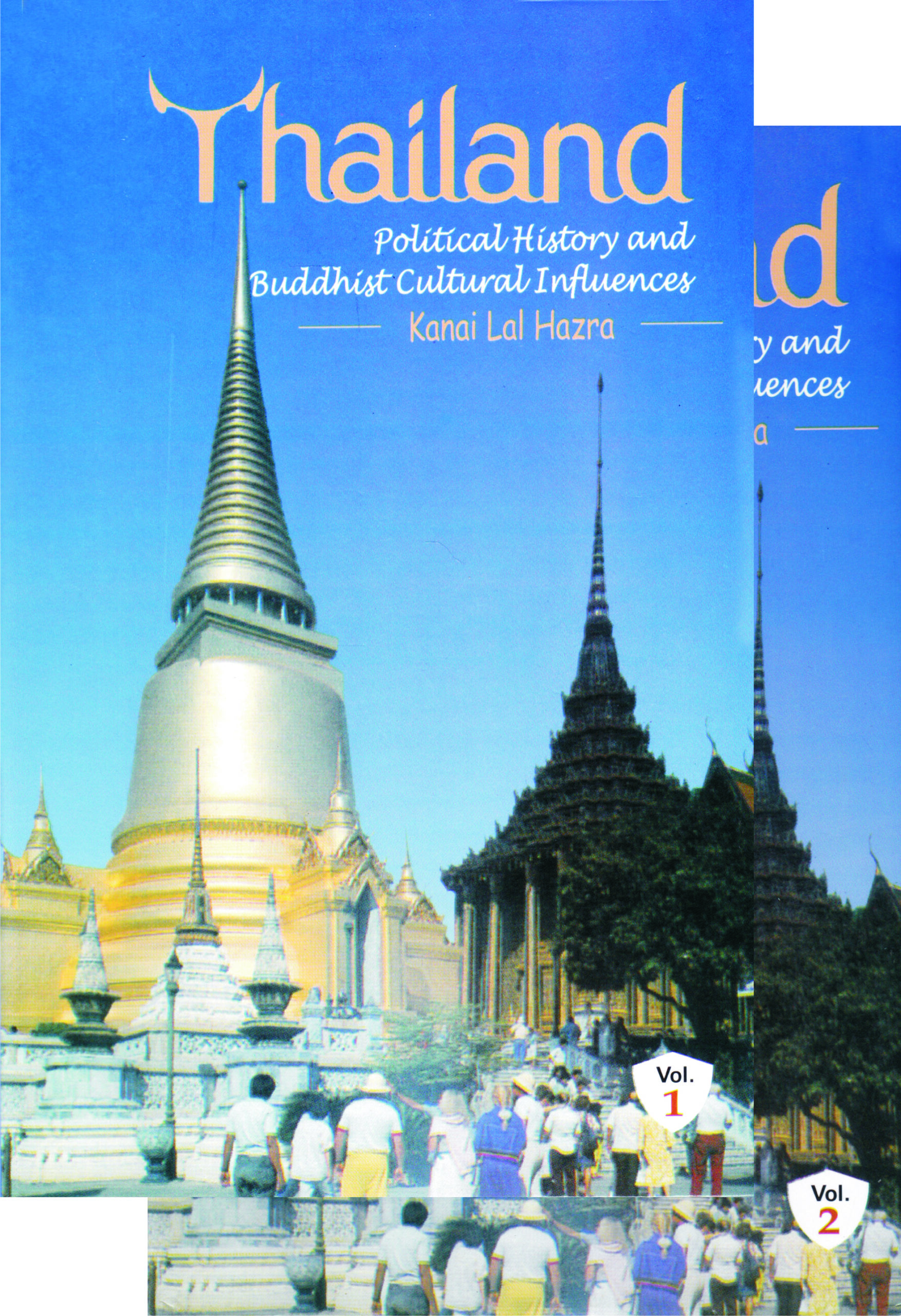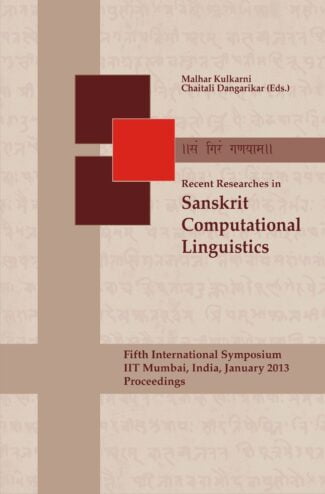-


Pali Language and Li...
Pali Language and Literature
A Systematic Survey and Historical Study (2 vols. Set) by: Kanai Lal HazraBeginning with a description of the language, its historical evolution, phonology and grammatical categories, the book studies the canonical Pali texts (the three Pitakas) and surveys the non-canonical Pali literature covering manuals and chronicles.
₹2,250.00
ISBN: 9788124600047
Year Of Publication: 2014
Edition: 3rd
Pages : xvii, xvii, 823
Bibliographic Details : Bibliography; Index
Language : English
Binding : Hardcover
Publisher: D.K. Printworld Pvt. Ltd.
Size: 25 cm.
Weight: 1700
In Pali is preserved the Buddhist canon. Which, considered as the most authentic form of Buddhavacana, constitutes the very matrix of its 2500-year-long Theravada tradition. A refined, widely-spoken language of the early Middle Indic (Indo-Aryan) stage: about bc 600-200, Pali has also left, for posterity, a splendid legacy of secular literature that captures contemporary socio-cultural milieus not only of India, but of Myanmar, Thailand, Sri Lanka, and other neighbouring countries as well. Here is, in two volumes, a fascinating, well-knit study of the Pali language, and also of its literature: both canonical and non-canonical. Beginning with a systematic description of the language, its historical evolution, phonology and major grammatical categories, VOLUME 1 takes an indepth, critical look at the canonical Pali texts all the three Pitakas : the three baskets (collections): the Vinaya, Sutta and Abhidhamma, which, among other things, embody Sakyamunis own universal message, the writings of his immediate monastic followers/disciples, the basic principles of shula (ethical behaviour), the disciplinary codes for the sangha and, above all, the Theravada philosophy in its truly pristine frame. VOLUME 2 surveys nearly the whole variety of Non-canonical Pali Literature covering creative writings, manuals, and as many as 25 chronicles: from Sri Lanka, Myanmar, and Thailand besides numerous commentaries of the old-world scholars, like Buddhadatta, Buddhaghosa, and Dhammapala. In focus here are also a range of treatises on law, grammar, lexicography, and poetics including rhetorics and metrics. A painstakingly documented work with a comprehensive index, involving years of Dr. Hazras research effort, this book is invaluable to the scholars/researchers of Buddhist Studies, specially of Theravada Buddhism, Pali language and Pali literature.
Volume One
Preface
Abbreviations
Part 1
(Language: History and Structure)
1. A History and Structure of the Pali Language
The Meaning of the Word Pali
Theories of the Origin of Pali — The Home of Pali
Periods of the Development of Pali
The Various Elements of Pali
The Script of Pali
Characteristics of Pali Phonology which was DIfferent from Old Indo-Aryan and Sanskrit
The Law of Mora
Phonological Terms
Phonology of the Pali Vowels
The Vowel a, i and u
The Treatment of R and L
Treatment of L
The Dipthongs
Influence of Neighbouring Sounds Upon Vowels
Influence of Accent on Vowels
Contraction of Vowels
Viprakarsha or Anaptyxis, i.e., Intensive Vowels
Verse and Vowel Quantity
Vowel Quantity in Compounds
Shortening of Long Vowels in Compounds
Some Special Words
Consonants — Single Consonants
Loss of Interior Stops Between Two Vowels
Reduction of An Aspirate to h
Unvoicing of Consonants
Aspiration
SH and SH Become Cha
Change of Place of Articulation of Consonants
Cerebral for Dental
N for N
Interchange of L and R
N for L
Y and V are also Interchanged
Dissimilation
Metathesis
Consonant Groups
Assimilation of Consonants
Sibilant with Liquids or Semi-Vowels
The Treatment of the Group KSA
Indo-European Ks
Intro-Iranian Shs
Combination of More than Two Consonants
Arrested Developemtn of the Two-Consonant Basis
Some Peculiar of Rare or Uncommon Cases
Metathesis or Interchange of Sounds
Haplology
Sandhi
Other Cases of Sanskrit Sandhi
D is Proper in Several Examples
G is Correct
Declension of the Noun
Gender
Case Forms Number
Nouns Ending in A
The Accusitive Singular Represent Old Indo-Aryan
Declension and Conjugation
Conjugation
Importance of the Study of Pali
Part II
(Literature: Canonical Pali Texts)
2. Dhamma and Vinaya : (Sutta and Vinaya)
Dhamma
Vinaya
Difference Between Sutta Pitaka and Vinaya Pitaka
Pitaka Divisions
Chronology of the Pali Pitaka Texts
3. The Sutta Pitaka Texts
Structure and Organization
Significance of the Term Nikaya
The Digha Nikaya
The Majjhima Nikaya
The Samyutta Nikaya
The Sagathavagga — The Nidana Vagga — The Khandhavagga — The Salayatanavagga — The Mahavagga
The Anguttara Nikaya
The Khuddaka Nikaya
The Khuddakapatha — The Dhammapada — The Udana — The Itivuttaka — The Sutta Nipata — The Vimanavatthu — The Petavatthu — The Theragatha — The Therigatha — The Jataka — The Niddesa — The Patisambhidamagga — The Apadana — The Buddhavamsa — The Cariyapitaka
4. The Vinaya Pitaka Texts
Structure and Organization
The Suttavibhanga
The Patimokkha
The Parajika — The Sanghadisesa — The Aniyata — The Nissaggiya-Pacittiya — The Pacitiya — The Patidesaniya — The Sekhiya — The Adhikarana-Samatha
The Khandhakas
The Mahavagga
The Cullavagga
The Parivara or the Parivarapatha
5. The Abhidhamma Pitaka Texts
Structure and Organization
The Dhammasangani
The Vibhanga
The Kathavatthu
The Puggalapannatti
The Dhatukatha
The Yamaka
The Patthana
Volume Two
Preface
Abbreviations
(Literature: Non-Canonical Pali Works)
6. Extra-Canonical Works
The Nettipakarana
The Petakopadesa
The Milinda Panha
7. Pali Commentaries
Structure
Tradition Regarding the Atthakatha
Sinhala and Dravidian Commentaries
Other Sources of the Pali Commentaries
The Pali Commentaries
Buddhadatta and his Works
The Vinayavinicchaya and the Uttaravinicchaya
The Abhidhammavatara
The Ruparupavibhaga
The Madhuratthavilasini
The Jinalankara
Buddhaghosa and his Works
The Visuddhimagga
The Samantapasadika
The Kankhavitarani
The Sumangalavilasini
The Papancasudani
The Saratthappakasini
The Manorathapurani
The Khuddakanikayatthakatha
The Dhammapadatthakatha
The Jatakatthakatha
Dhammapala and his Works
The Vimanavatthu-Atthakatha
The Petavatthu-Atthakatha
The Theragatha-Atthakatha
The Therigatha-Atthakatha
The Cariyapitaka-Atthakatha
Commentaries on the Abhidhamma
The Atthasalini
The Sammohavinodani
The Dhatukathappakarana-Atthakatha
The Puggalapannatti-Atthakatha
The Kathavatthu-Atthakatha (The Kathavatthuppakarana-Atthakatha)
The Yamakappakarana-Atthakatha
The Patthanappakarana-Atthakatha
8. Pali Chronicles
The Pali Chronicles of Sri Lanka
The Dipavamsa
The Mahavamsa
The Culavamsa
The Buddhaghosuppatti
The Mahabodhivamsa (The Bodhivamsa)
The Dathavamsa (The Dantadhatuvamsa)
The Thupavamsa
The Hatthavanagallaviharavamsa
The Rasavahini
The Samantakuta Vannana
The Nalatadhatuvamsa (The Lalatadhatuvamsa)
The Sasanavamsa-Dipa
The Pali Chronicles of Myanmar (Burma)
The Cha-kesa-dhatu-vamsa
The Gandhavamsa
The Sasanavamsa
The Pali Chronicles of Thailand
The Cha-Kesa-Dhatu-Vamsa
The Gandhavamsa
The Sasanavamsa
The Pali Chronocles of Thailand
The Camadevivamsa (The Chamadevivongs)
The Jinakalamali
The Sangitivamsa
The Mulasasana
The Pra Sihing (The Sihinganidana)
The Ratana Bimbawongs (The Ratana Bimbavamsa)
The Pansavadan Krun Kao Chabab Praset Aksaraniti (The Phra Rajaphongsavadan Krung Kao Chabab Hluang Praset)
The Pathamasambodhi
The Uppatasanti
The Saddhamma-Sangaha
9. Singular Pali Literary Pieces
The Anagatavamsa
The Jinacarita
The Telakatahagatha
The Pajjamadhu
The Saddhammopayana
The Pancagatidipana
10. Pali Manuals
The Saccasankhepa
The Abhidhammattha-Sangaha
The Namarupapariccheda
The Namarupasamasa
The Suttasangaha
The Paritta (The Mahaparitta)
The Simalankarappakarana
The Khuddakasikkha and the Mulasikkha
11. Other Miscellaneous Texts
Pali Grammar
Lexicons or Lexicography
The Abhidhanappadipika
The Ekakkharakosa
Poetics and Metres (Works on Rhetorics and Metrics)
The Vuttodaya
The Subodhalankara
Law — Myanmarese
The Dhammavilasa-Dhammathat (The Dhammavilasa-Dhammasattha)
Pali Tracts in the Inscriptions in India and Abroad
Maunggan Gold Plates
Bawbawgyi Pagoda Stone Fragments
Text of the Two Gold Plates
Text of the Fragmentary Stone Inscription
A Gold-Leaf Manuscript Found at Hmawza, Prome in Myanmar
An Inscription of a.d. 1442 (b.e. 804)
Pali Texts Mentioned in the Inscriptions of Parakramabahu at Galawihara, Sri Lanka
Bibliography
Index








